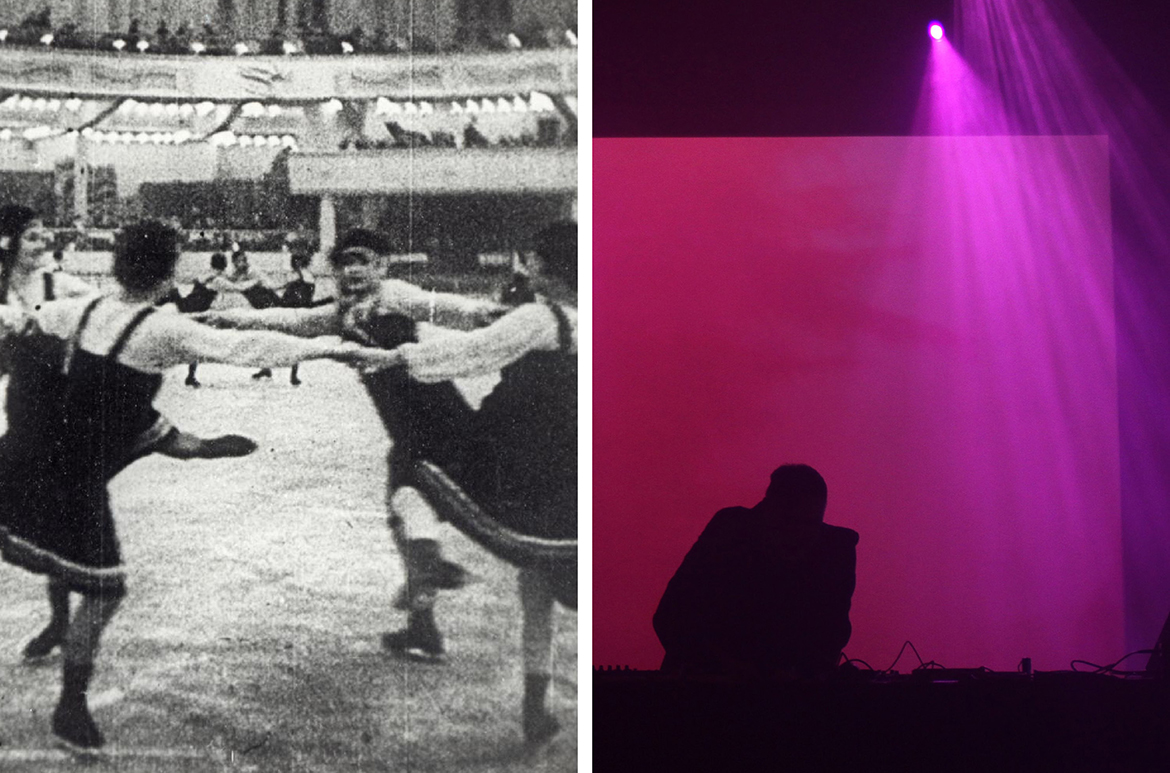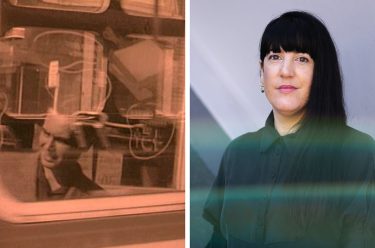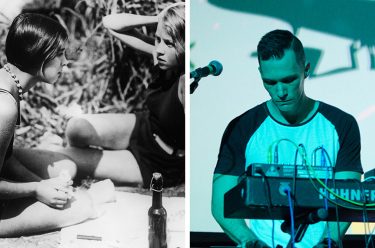One of the most beloved and playful ‘City Symphony’ films is our September event: Berlin, Symphony of a Great City 1927. Musician Heinz Riegler blends experimental, electronic, and rock sensibilities to create a fulsome sound befitting the silent film classic. This exhilarating documentary-poem is fashioned by three great German filmmakers who innovated story concepts, visual abstraction, and camera movement. All worked across both commercial and experimental film techniques: Walter Ruttmann, Carl Mayer, and Karl Freund. The film highlights a cross section of life in a vibrant 1920s Berlin.
Get tickets to City Symphony Live Music & Film series
Australian Cinémathèque, GOMA
11.00am, Sunday 24 September

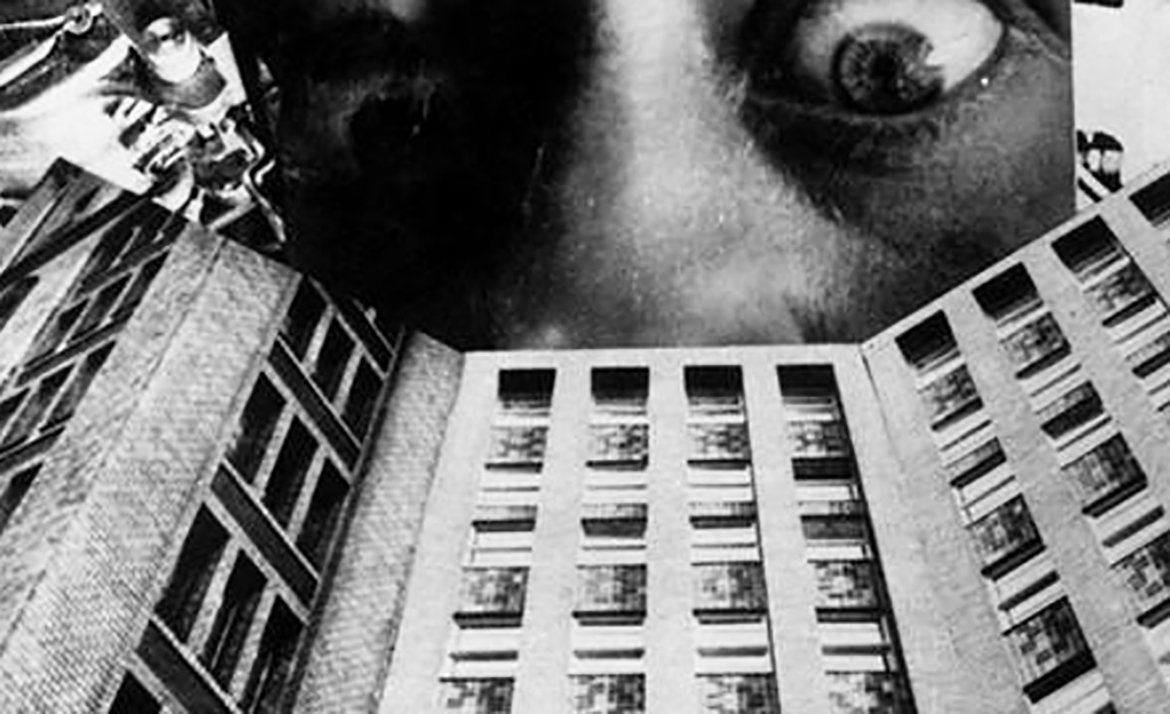
We asked Heinz about his approach to this stunning film and what the audience can expect.
Rosie Hays / The film you’ll accompany is ‘Berlin, Symphony of a City’. It’s considered one of the best City Symphony films ever made. There’s lots of experimentation on screen and it feels very playful. When did you first see the film and what struck you about it?
Heinz Riegler / I first saw the film back in 2008, when I was working with you and the Australian Cinémathèque to program the performers to accompany the films in a season of Expressionist German film. I remember a lot of great films in that program and I remember doing a number scores solo myself, as well as some with I/O3, but I distinctly remember seeing Berlin, Symphony of a City. I had asked Andrew Tuttle to perform the score and I really enjoyed how he navigated the film sonically, but I was also really struck by the unusual visual language within that film and I found myself yearning to have a crack at it ever since. Something about the editing peaked my curiosity in particular, with the pacing and the cuts being quite unconventional for the time. There is some evidence that was inspired by some of the soviet film-making techniques from that era, which leads to further enquiry, especially when framed through a historical lens.
Like most first-time-viewers I was mainly drawn to reflect on the decade of its making, on seeing a Berlin that had not yet been overwhelmed by the fascists, a Berlin that by all accounts was a pulsing metropolis, a cultural oasis at the time, a place that seemed to support and encourage experimentation in the arts, theatre and literature, coupled with a progressive type of sexual liberation and a nightlife to compliment all of that. Probably also important to remember that the roaring 20’s were reserved mainly for the bourgeoise, with a parallel precariat existing in other districts of Berlin at the same time. And we have to credit the director with at least hinting at those varied conditions. But placing the film in that historical context consequently makes it impossible to ignore the sequence of events that follow from 1927 onwards.
The human beings we see in that film can be read as ghosts perhaps; ghosts that within a couple of years may be faced to chose between emigration; or be murdered. Or we can read them as dormant sleeper cells that will shortly chose an active engagement in the class struggle on the streets; or walk around wearing brown-shirts, torching Jewish run businesses. And all of a sudden, it’s not some cute documentary symphony anymore, but may instead give opportunity for a more direct, or in other words, less playful interpretation. Viewing it again, there are of course also the landmarks to consider, landmarks representing the human labour that is attempting to liberate itself from the market forces. Yet these landmarks, just like some of its creators – are going to be levelled to the ground only 15 years later. Seeing the film creates a strong sense of a fragility, both historically, but also a fragility that can easily be inserted into contemporary circumstances.
Rosie Hays / Now that you’ve started thinking about crafting a live score, did your understanding or feeling for the film change as you look at it through that lens?
Heinz Riegler / Crafting isn’t a word I would use when describing the process. Crafting infers an order and discipline that may be required when writing for a soundtrack, but I’m not writing a score here. Instead, when we talk about a live score, we are talking about a performative action in a cinema space, in combination with a moving image. Things are much less fixed in that performative setting. For that purpose I am interested in improvisation as the essential tool where the score is an attempt to occupy a space that exists between performance and composition. That means I’m less interested in watching the film over and over in preparation for a live score. I need to keep an element of surprise. I’ll watch it once or twice perhaps and then make notes, do some reading and then start getting on the tools. I might find a theme that resonates after the initial viewings and I’ll start building from those fragments, but rarely actually watching the film as I’m trying out various approaches. In many ways, I like to forget the details of the film during that part of the preparation.
The aim is to get a scent and then chase that runaway animal, without ever really catching it. I know that sounds weird, and I did laugh out loud as I typed that, but there’s some truth to it. I couldn’t think of anything more boring than breaking down a film scene-by-scene and then attempting a synced reproduction of a composition. Not going to happen. With Berlin, Symphony of a City, I will probably pay attention to the five acts within the film and may develop some themes for each, but at the same time I’m not necessarily wedded to that. I’m not interested in hitting cues, but I’m very interested in capturing an overall arc of the visual and connect to that at different points throughout, but also be disconnected at other times. Ideally that tension is what may bring some communication between myself and the film and following on from that, hopefully, also with the audience.
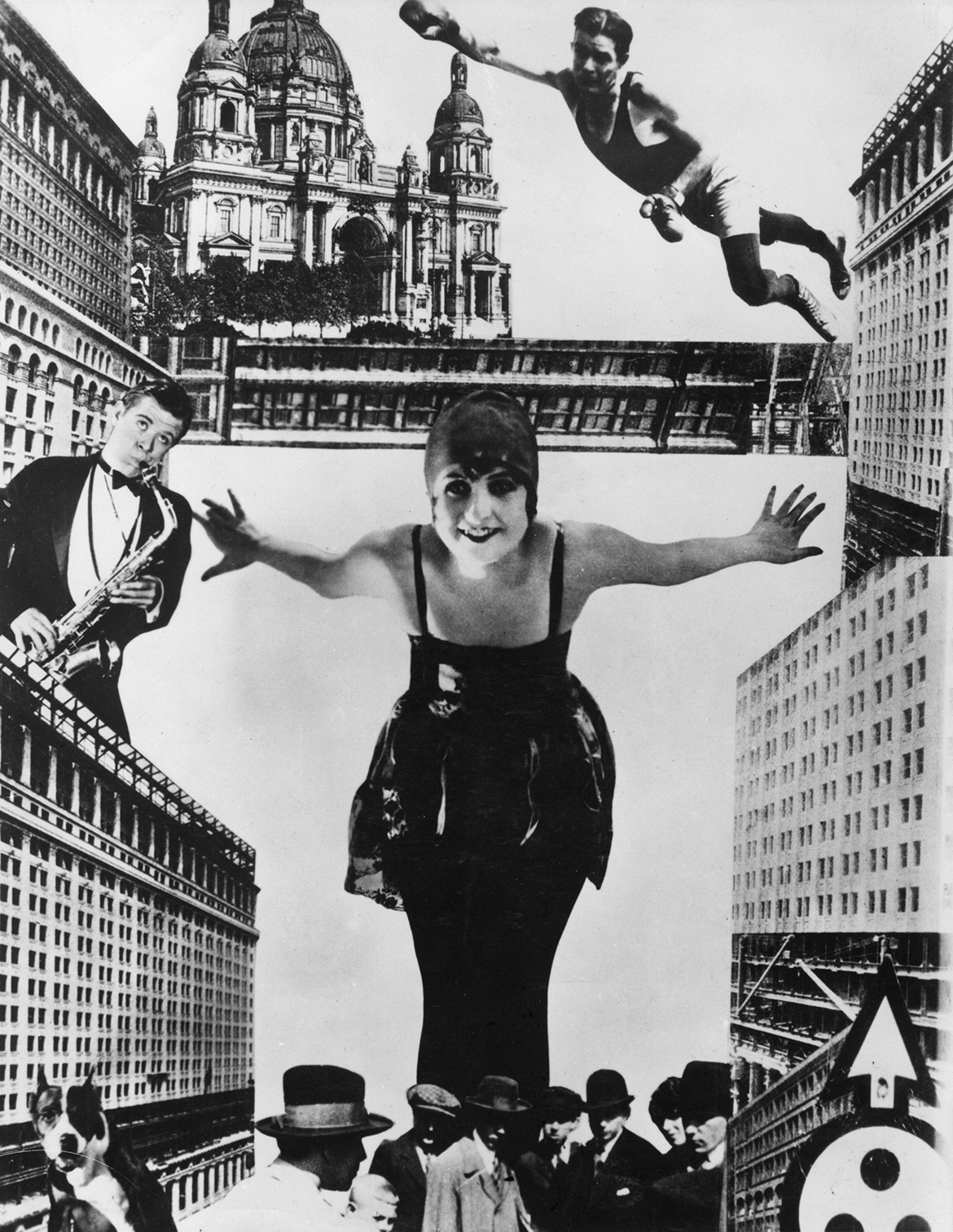
Rosie Hays / Most musicians we commission to create and play a live score for a film are completely new to the process. Some are even fairly new to watching a silent film. You’re rare in that you’ve done this before. You’ve worked on a number of silent film accompaniments here at the Gallery and you’ve toured live music with a film for the Goethe Institute previously. Where do you start when thinking about the film and the music combined?
Heinz Riegler / It helps if I like the film. If I can construct some connection to it. Or project a connection at least. If I believe it’s possible, that’s all that matters. It’s easy with this film, because I do really like it, so should be a walk in the park. I like imagining the lives of the human beings in it, the promises, the betrayals, the hope, and the meaning/meaningless, I like placing myself in the historical context and I like to think about how it may relate to us today. Being an Austrian born in 1969 I have a vast pool of guilt and family history to tap into when it comes to that era of European history, so that helps too. It’s a rich experience watching that film, because it does a great job at hinting at things without necessarily whacking you over the head with an ideology. Hopefully, there’ll be some merging of sound and vision in the cinema, but it’s definitely easier if you can manage to resonate with the vision. What is also interesting is that there’s been a huge history of scores that have been created for this film over the last 96 years. I’ve not listened to any of them except an excerpt from musique concrète pioneer Pierre Henry, who made a piece inspired by the film, commissioned by Westdeutscher Rundfunk in 1984. It’s a great listen and I may take some cues from his approach.
Rosie Hays / For ‘Berlin, Symphony of a City’ I’d love to hear what style of music you’ll play, what instruments you’ll use and what the audience should expect from your performance.
Heinz Riegler / I recently read about Kurt Weill’s score for The Threepenny Opera which debuted in Berlin in 1928, one year after Berlin, Symphony of a City first screened. Weill is said to have defied traditional operatic conventions by incorporating elements of popular music genres like jazz and cabaret. I intend to follow his lead and also bring a popular style to the film, a style formed from within a present day urban experience. I’ve not yet found a suitable name for it, but the working title is ambient terror.
I’m going use a variety of instruments, some which I’ve built, some of which I’ve bought in shops. I imagine some synthesisers will make an appearance, perhaps even an electric guitar, but I cannot be sure at this point. I promise to not play the kazoo.
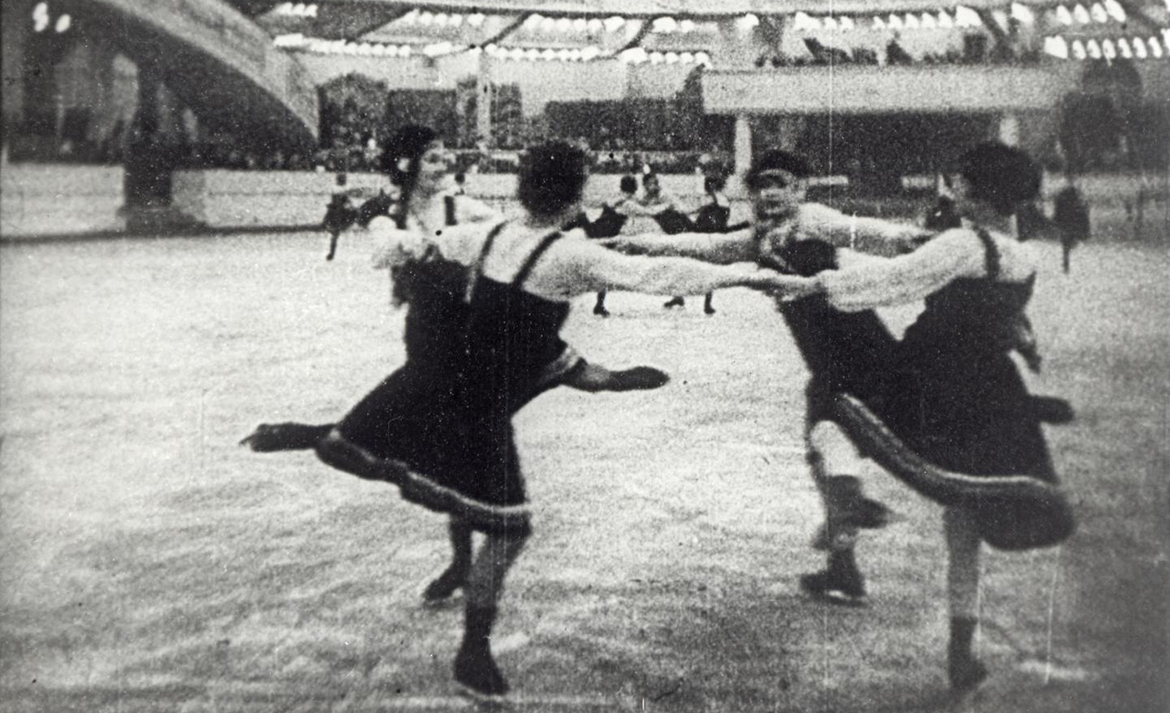
Rosie Hays is Associate Curator, Australian Cinémathèque, QAGOMA
Upcoming live music & film
Live Music & Film: Berlin, Symphony of a Great City 1927
Live Music & Film: Nothing But Time 1921–2012
Live Music & Film: Man With a Movie Camera (with violin) 1929
City Symphony special ticket offer
See the full series and save! Buy 5 to 9 tickets and receive a 10% discount. Buy 10 tickets and receive a 20% discount. Get tickets
The Australian Cinémathèque
The Queensland Art Gallery | Gallery of Modern Art (QAGOMA) is the only Australian art gallery with purpose-built facilities dedicated to film and the moving image. The Australian Cinémathèque at GOMA provides an ongoing program of film and video that you’re unlikely to see elsewhere, offering a rich and diverse experience of the moving image, showcasing the work of influential filmmakers and international cinema, rare 35mm prints, recent restorations and silent films with live musical accompaniment by local musicians or on the Gallery’s Wurlitzer organ originally installed in Brisbane’s Regent Theatre in November 1929.
Featured image: (left) Production still from Berlin, Symphony of a Great City 1927 / (right) Heinz Riegler; Photography: Amelia Paxman; Courtesy: Heinz Riegler
#QAGOMA
